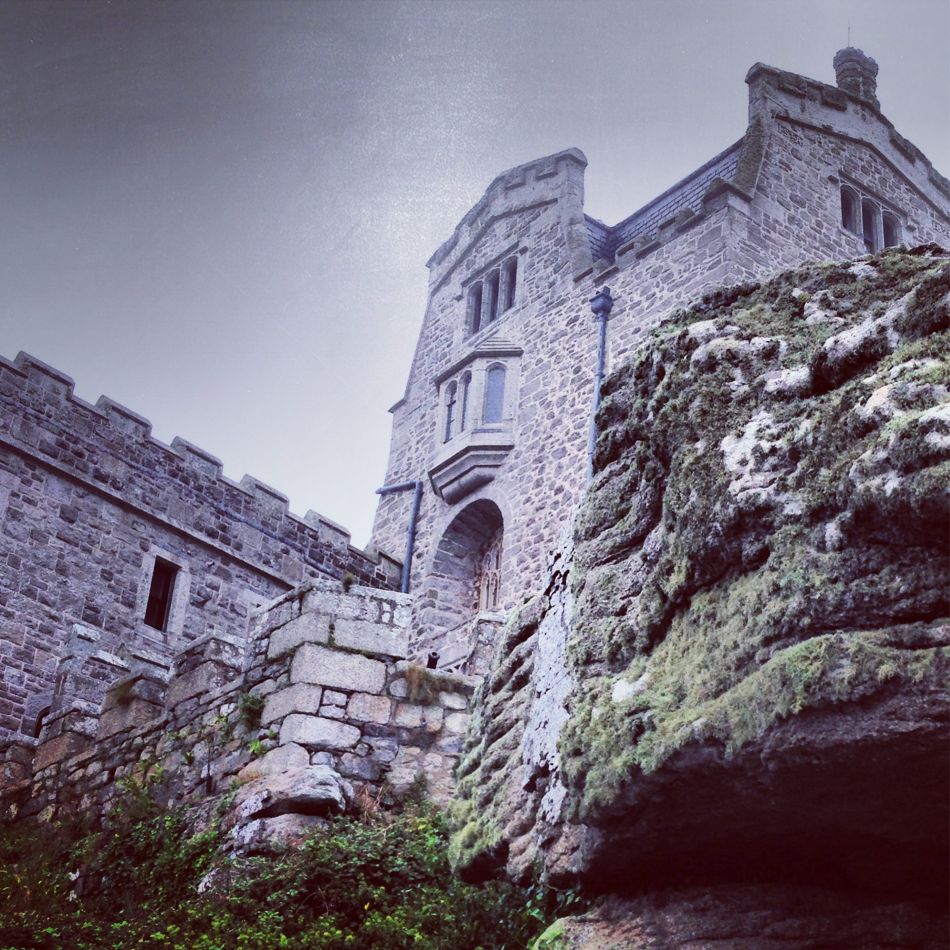Catholic Cornwall
Before 1550, the Catholic religion was an important part of Cornish culture. Many of the things that Cornish people did were connected with the Catholic Church. These included celebrating saints days and feasts, caring for holy wells and shrines, and being members of religious guilds. Guilds were clubs that raised money to look after the local church, care for the poor and pray for the memory of family members who had died. Religious centres like Glasney College in Penryn also promoted the Cornish language by writing plays such as Bewnans Meriasek, which told the story of St Meriasek, the patron saint of Camborne. These plays helped Cornish people to understand religion.
Protestant England
England’s King Henry VIII made a number of changes to religion. He ordered that saints’ shrines (where the bones of saints were kept) should be destroyed and religious centres closed. When King Henry died in 1547, his son Edward was only nine years old and too young to rule. Edward’s government ministers ruled for him and continued the religious changes, aiming to change the country from Catholic to Protestant. One of the first things they did was to ban religious guilds. They also banned pilgrimages – these were visits to holy places like St Michael’s Mount and St Piran’s Church.

William Body comes to Helston
Edward’s government ministers ordered that all religious statues, images and monuments be removed from churches and destroyed. The ministers sent a man called William Body to do this in Cornwall. Body had already upset people in Launceston and Penryn by telling them that their church belongings would be taken away. On 5th April 1548, he arrived at Helston and began removing religious images and statues from the parish church.
Cornish resistance
People living close to Helston soon found out what Body was doing at the church. A crowd of over 1,000 people from across west Cornwall gathered and began to march to Helston. They were armed with weapons and were led by the priest of St Keverne, Martin Geoffrey. The people were determined to stop Body from destroying their religious statues and images. They said that the government ministers had no right to make changes to religion while Edward was too young to rule.
Stabbed to death
When Body heard that a large crowd of Cornish people was coming to Helston, he hid in a house near the church. The crowd soon found where Body was hiding and surrounded the house. They dragged Body out of the house and he was stabbed to death by William Kilter and Pasco Trevian. A man in the crowd called John Piers said that he would rescue anyone who was arrested for killing Body. Another man called John Ressiegh said there should be no more changes to religion until Edward was 24 years old. He threatened to kill anyone else who tried to remove images from the church.
Punishment
Two days after Body was killed, 3,000 people gathered in Helston. They were armed with weapons and determined to prevent officials from investigating the killing. The English government began to worry that the 3,000 people would grow into a large army. Men were sent to Helston from east Cornwall to try to calm the situation. A document from that time shows how men from Stratton were paid to travel to Helston:
1548
Item: Delivered to William Grove and Stephen Daw for the business [the killing of Body] that was in the west part – 10 shillings.
Item: For the cheese that they had with them – 6 pence.
Item: Paid to Mr Thomas Arundell by the hand of William Yeo to pay them that went west at this business – 31 shillings and 4 pence. Account Book of the Stockwardens of Stratton (1548)
Eventually, 28 people were arrested for being involved in the killing of Body. Some were pardoned (forgiven), but others were executed (killed). Even though some were executed for killing Body, Cornish people remained very angry about the religious changes. The next year, in 1549, they formed an army and fought against the English government in the Prayer Book Conflict.
The people
We know a lot about the people who were arrested for the killing of William Body because the English government kept detailed records. At least two of these people were probably from Brittany (Laurence Breton and Michael Vian Breton).
From St Keverne
Martin Geoffrey, priest: hanged, drawn and quartered in London
Henry Tyrlever, mariner: hanged, drawn and quartered in Launceston
John Trybo, farmer: hanged, drawn and quartered in Launceston
Thomas Tyrlan Vian, mariner: hanged, drawn and quartered in Launceston
Pascoe Trevian, mariner: hanged, drawn and quartered in Launceston
Richard Rawe, farmer: hanged, drawn and quartered in Launceston
Martin Ressiegh, farmer: hanged, drawn and quartered in Launceston
James Robert: mariner: hanged
John Piers, mariner: pardoned (forgiven)
Edmund Irish, blacksmith: pardoned
John William Trybo: pardoned
Michael John, mariner: arrested but released
John Tregena, mariner: arrested but released
James Tregena, mariner: arrested but released
Maurice Tryball, mariner: arrested but released
From Gwennap
John Chykose, farmer: arrested but released
Alan Rawe, farmer: arrested but released
Laurence Breton, groom: arrested but released
Michael Vian Breton, farmer: arrested but released
From Constantine
John Kilter, farmer: hanged, drawn and quartered in Launceston
William Kilter, landowner: hanged, drawn and quartered in Launceston
From Grade
William Amys, farmer: pardoned
Hugh Mason: arrested but released
From Illogan
John Kelyan, landowner: pardoned
From Mullion
William Thomas, mariner: pardoned
From Perranzabuloe
Oliver Ryse, farmer: pardoned
From Redruth
Richard Trewela, landowner: arrested but released
From Ruan Minor
John Williams, miller: arrested but released
Another Cornishman was taken to Plymouth and hanged on Plymouth Hoe. This was supposed to be a warning to the people of Devon not to resist the religious changes. It didn’t work. A year later people in Devon joined their Cornish neighbours fighting the English government in the Prayer Book Conflict.










